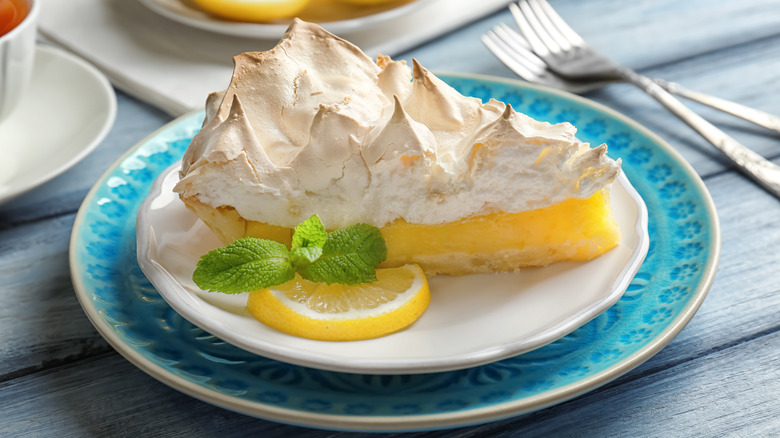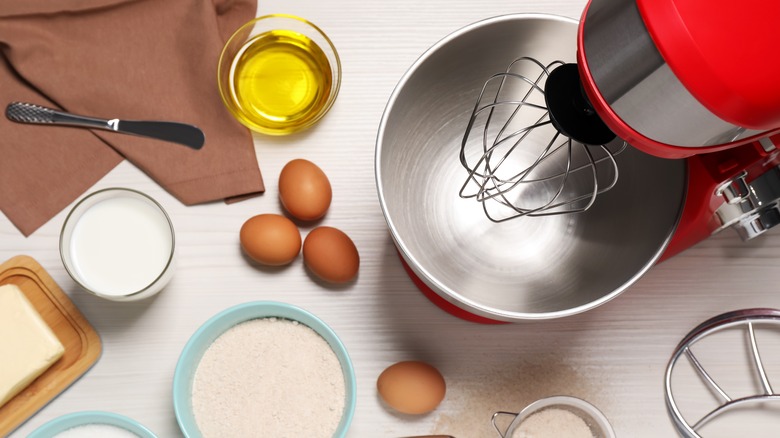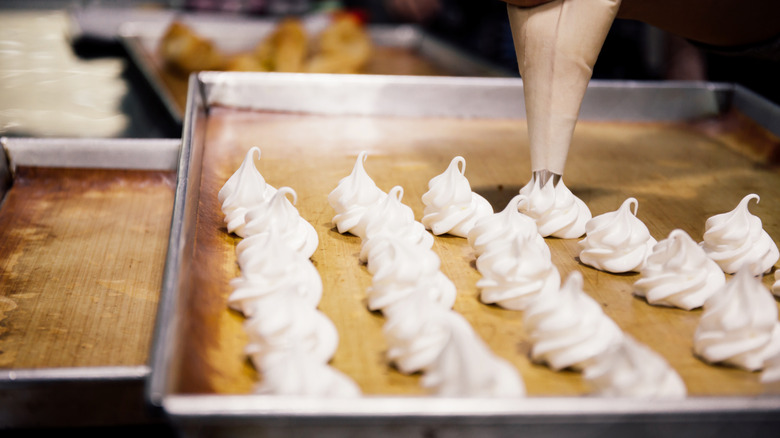For Perfect Meringue, Pay Attention To The Bowl You're Using
Meringue has so many wonderful and delicious uses. You can make a bright and fluffy meringue on a mile-high lemon meringue pie, a crisp pavlova with a marshmallow-like interior, or crunchy little meringue cookies to gobble up. But if you aren't careful about preparation, your meringue will, literally, fall flat.
Meringue should be light, fluffy, and stiff enough so you can form it into peaks. If you drop a dollop onto a cookie sheet, it should hold its shape. And it should be of the right texture so that you can use it in a pastry bag. While this seems simple, there are many pitfalls that can get between you and the perfect meringue.
Most bakers know that to make a meringue you must beat egg whites with sugar until they become stiff, but did you know that the bowl you're using can make a difference between fluffy success and abject failure? What difference can an inanimate object make in the success or failure of your lemon meringue pie?
Rules about that bowl
The most important meringue rule is there cannot be the slightest bit of egg yolk in the white, according to What's Cooking America. Beating egg whites denatures the protein in the white, creating a web that holds air. Egg yolks contain fat that interferes with foam production. The tiniest bit of fat interrupts that foam, which leads us to the bowl.
The bowl you use to make your meringue must be free of fat, says The Incredible Egg. One way to ensure that the bowl is fat-free is to rub the cut half of a lemon inside it, notes Marcus Wareing via The Guardian. Then wipe the bowl with a paper towel and make sure that the bowl is dry. The bowl you choose should be stainless steel or copper. Copper is best because the ions in the copper molecules help stabilize the foam per Science Notes. Do not use a plastic bowl, as King Arthur Baking Company claims that it's almost impossible to make plastic grease-free.
And don't press your luck and separate each egg above the bowl holding the other egg whites. One slip of the shell can pierce the yolk, and all of the egg whites will be ruined for meringue. So use a separate small bowl to separate each egg, then add the yolk-free white to the bowl you'll use to beat them.
Make perfect meringue
Now that your bowl is grease-free, clean, and dry, separate those eggs and start on your recipe. Just one more tip: Make sure that the whisk or beater you are using is also clean, grease-free, and dry. It's easy to overlook something like that. If you're new to the meringue world, it may help to watch a video via Food Network.
Carefully follow the recipe of your choice. You can use a spoon to dollop the meringue onto the pie, cake, or cookie sheets, or try a pastry or decorating bag to feel like a chef. Then get your creation into the oven and watch the meringue carefully. In pie recipes, you are just browning the egg whites, you don't want to burn them.
Use your newfound meringue skills to make crisp and light pastel-striped meringue kisses and raspberries and Chambord in meringue nests. Or you can try your hand at a strawberry rhubarb custard meringue pie. Yum.


